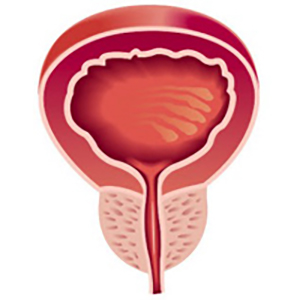Effectiveness and safety of spinal anesthesia in patients undergoing open radical retropubic prostatectomy

Accepted: March 20, 2023
All claims expressed in this article are solely those of the authors and do not necessarily represent those of their affiliated organizations, or those of the publisher, the editors and the reviewers. Any product that may be evaluated in this article or claim that may be made by its manufacturer is not guaranteed or endorsed by the publisher.
Objective: Prostate cancer is one of the most widespread neoplasms affecting the male gender. The most commonly used procedures in various urological centers are laparoscopic and robotic surgery because they are considered minimally invasive techniques. We present our experience in traditional open radical prostatectomy performed under spinal anesthesia. Materials and methods: We reviewed the clinical courses of 88 consecutive patients who underwent open radical prostatectomy performed under spinal anesthesia at our Institution. Results: Median age: 67.7 years. Median follow up duration: 48 months. Median pre-operative PSA: 15,9 ng/ml, median Prostate weight: 44.5 gr, median surgical time: 96.5 minutes (range 55-138). Perioperative complications were recorded. The most frequent complication was anemia, 9 cases need blood transfusion after surgery. Complications directly related to spinal anesthesia were not observed. Most patients were discharged within 5 days from the procedure. After two weeks we observed a quick recovery of total continence in 90% of patients. After 6 months all patients were perfectly continent. Erectile dysfunction after 6 months was reported by 48 patients. Conclusions: The reasons why the gold standard of radical prostatectomy surgery has been considered general anesthesia are essentially two: the long duration of the surgical procedure and the associated significant blood loss. Multiple evidences show that radical retropubic prostatectomy can be safely performed under spinal anaesthesia with various advantages. It is therefore no longer justified to consider general anesthesia as the gold standard for radical prostatectomy with an open technique.
Pereira R, Joshi A, Roberts M, et al. Open retropubic radical prostatectomy. Transl Androl Urol. 2020; 9:3025-3035.
Haese A, Knipper S, Isbarn H, et al. A comparative study of robotassisted and open radical prostatectomy in 10 790 men treated by highly trained surgeons for both procedures. M. BJU Int. 2019; 123:1031-1040.
Walsh PC, Retik AB, Vaughan ED. Anatomic radical retropubic prostatectomy. In: Campbell’s Urology, 7th ed., Philadelphia: W.B. Saunders, Co., 1998; vol.3, chapt. 86, pp.2565-2588.
Grasso M, Torelli F, Lania C, Blanco S. The role of bladder neck preservation during radical prostatectomy: clinical and urodynamic study. Arch Ital Urol Androl. 2012; 84:1-6.
Grasso M, Blanco S, Grasso AAC, et al. Radio guided radical prostatectomy: evaluation of feasibility, safety and clinical outcomes. Minerva Urol Nefrol. 2016; 68:3-8.
Fröhlich G, Wördehoff A. The urethral protractor. A new instrument for facilitating the anastomosis between urethra and bladder in radical prostatectomy and urethro-intestinal anastomoses following cystectomy. Urologe A. 1990; 29:155-7.
Donovan JL, Abrams P, Peterset TJ. The ICS-‘BPH’ Study: The psychometric validity and reliability of the ICS male questionnaire. Br J Urol. 1996; 77: 554-563.
Salonia A, Crescenti A, Suardi N. General versus spinal anesthesia in patients undergoing radical retropubic prostatectomy: results of a prospective, randomized study. Urology. 2004; 64:95-100.
Kofler O, Prueckner S, Weninger E. Anesthesia for Open Radical Retropubic Prostatectomy: A Comparison between Combined Spinal Epidural Anesthesia and Combined General Epidural Anesthesia. Prostate Cancer. 2019; 2019:4921620.
Bajwa SJ, Kulshrestha A. Anaesthesia for laparoscopic surgery: General vs regional anaesthesia. J Minim Access Surg. 2016; 12:4-9.
Wong RP, Carter HB, Wolfsonet A, et al. Use of spinal anesthesia does not reduce intraoperative blood loss. Urology. 2007; 70:523-6.
Pöpping DM, Elia N, Van Aken HK. et al. Impact of epidural analgesia on mortality and morbidity after surgery: systematic review and meta-analysis of randomized controlled trials. Ann Surg. 2014; 259:1056-67.
European Geriatric Medicine, 2013; vol. 4, pp. S17-S18.
Lee BM, Ghotra VS, Karam JA, et al. Regional anesthesia/analgesia and the risk of cancer recurrence and mortality after prostatectomy: a meta-analysis. Pain Manag. 2015; 5:387-395.
Hartmann B, Junger A, Klasen J, et al. The incidence and risk factors for hypotension after spinal anesthesia induction: an analysis with automated data collection. Anesth Analg. 2002; 94:1521-9.
Bromage PR. Neurological complications of subarachnoid and epidural anaesthesia. Acta Anaesthesiol Scand. 1997; 41:439-44.
Begg CB, Riedel ER, Bachet PB. Et al. Variations in morbidity after radical prostatectomy. N Engl J Med. 2002; 346:1138-44.
Gershman B, Meier SK, Jeffery MM, et al. Redefining and Contextualizing the Hospital Volume-Outcome Relationship for Robot-Assisted Radical Prostatectomy: Implications for Centralization of Care. J Urol. 2017; 198:92-99.
Pikramenos K, Zachou M, Apostolatou E, et al. The effects of method of anaesthesia on the safety and effectiveness of Radical Retropubic Prostatectomy. Arch Ital Urol Androl. 2022; 94:396-400.
Supporting Agencies
NoneCopyright (c) 2023 the Author(s)

This work is licensed under a Creative Commons Attribution-NonCommercial 4.0 International License.
PAGEPress has chosen to apply the Creative Commons Attribution NonCommercial 4.0 International License (CC BY-NC 4.0) to all manuscripts to be published.


 https://doi.org/10.4081/aiua.2023.11281
https://doi.org/10.4081/aiua.2023.11281



